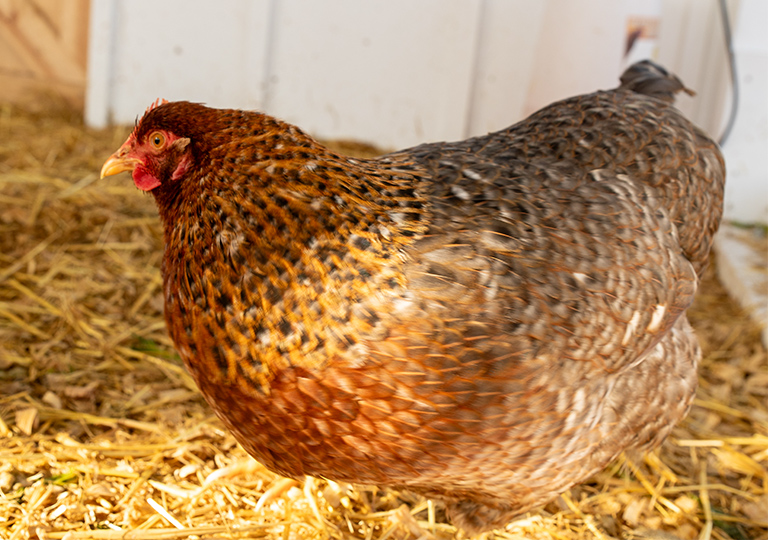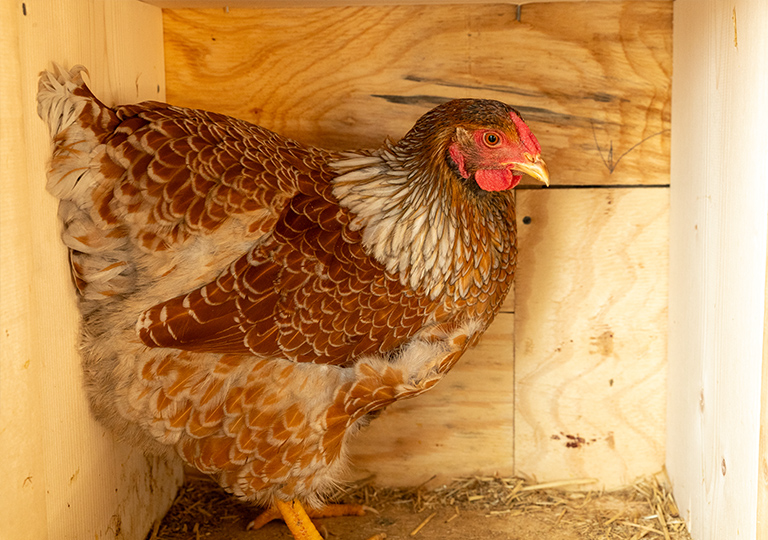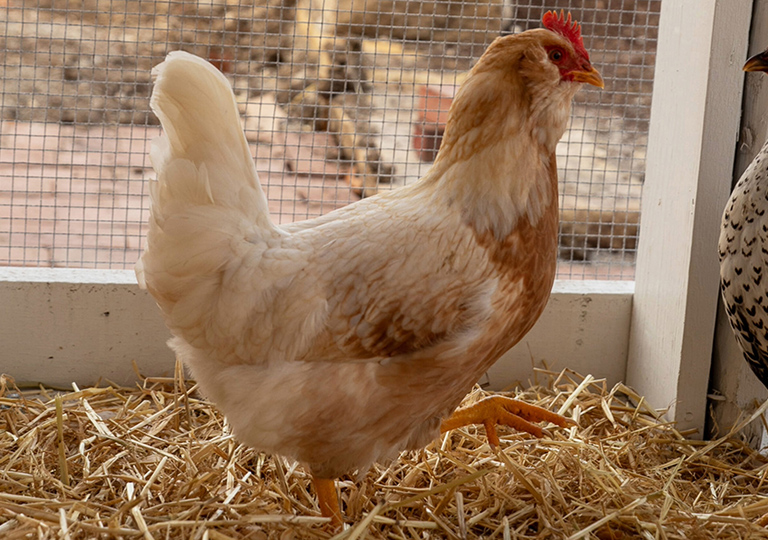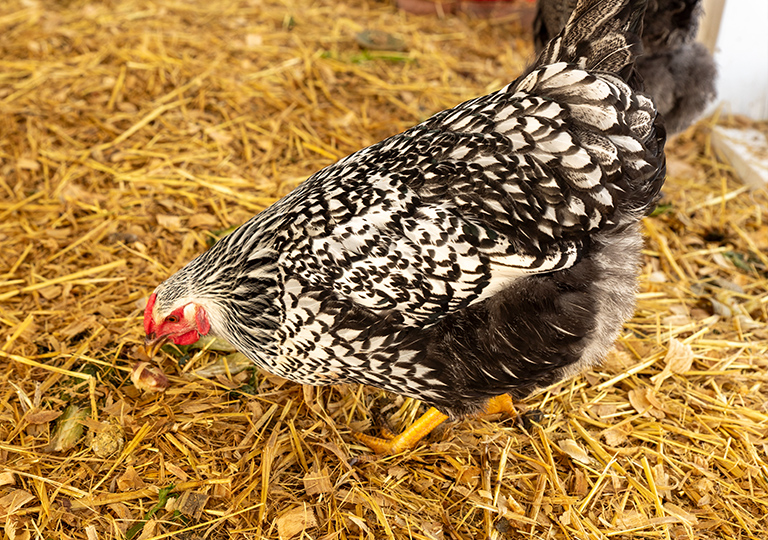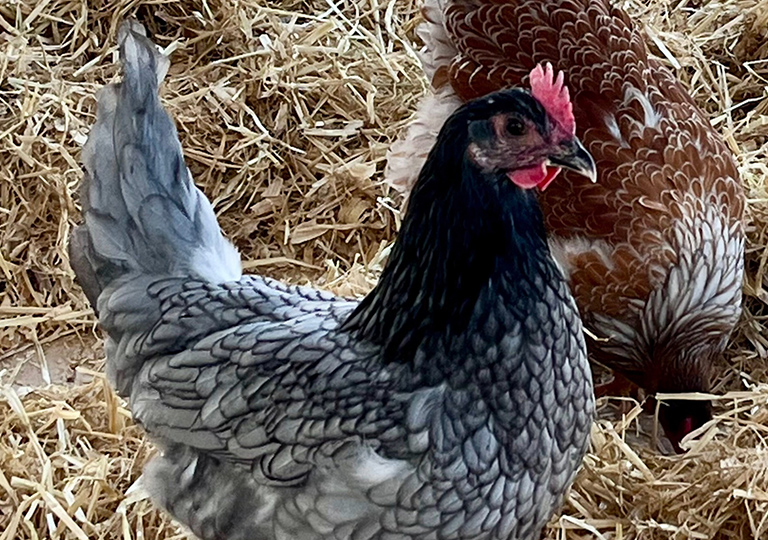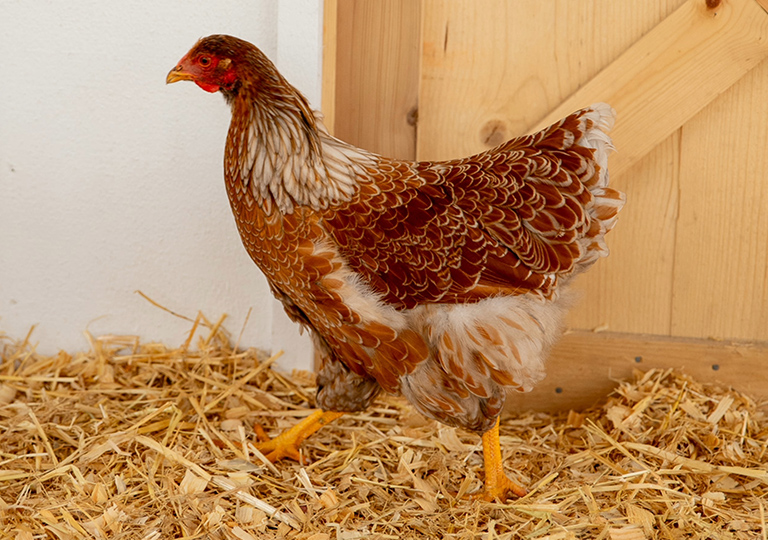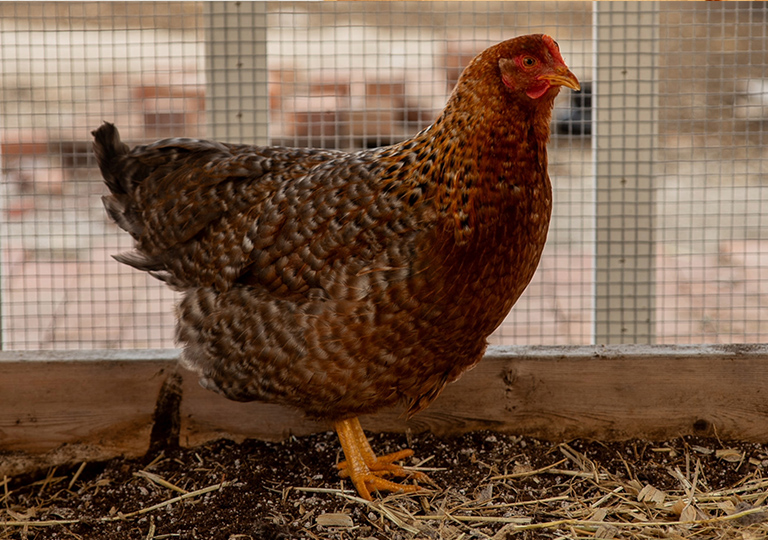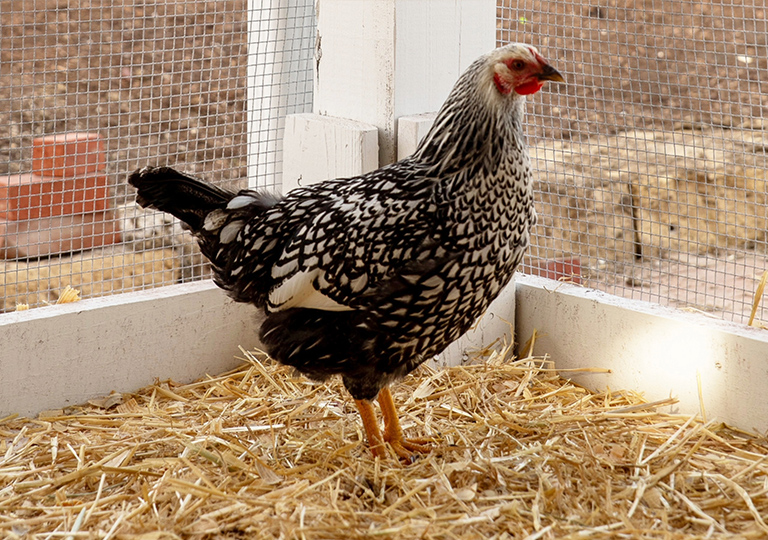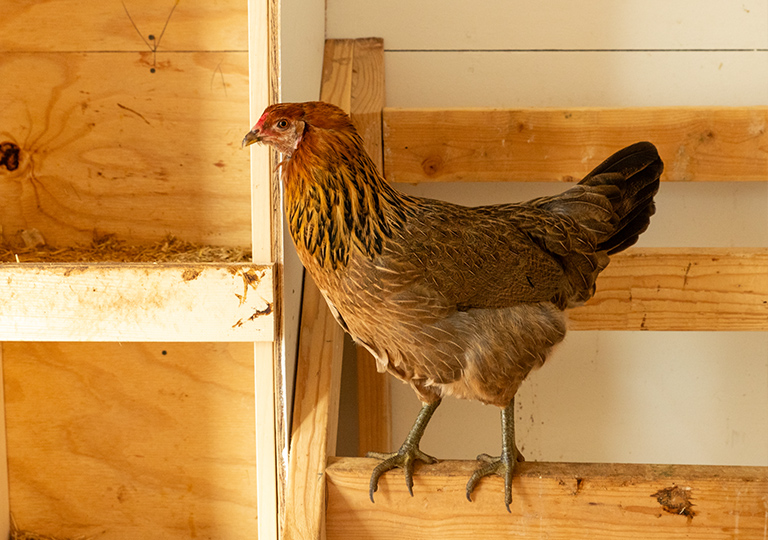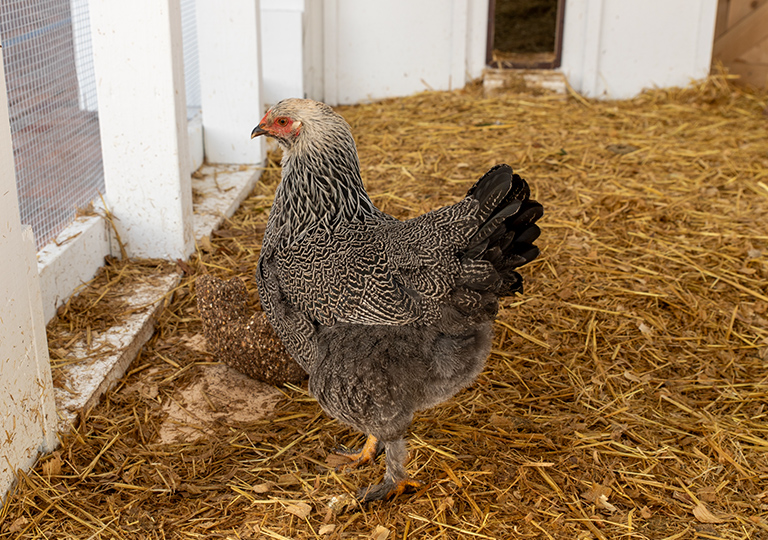The Coop
The Coop is the Urbandale Machine Shed's newest addition, dedicated to our mission of highlighting the American farmer’s way of life. It offers families an opportunity to learn about chicken farming and see a diverse array of breeds from around the world. Thanks to our partnership with Murray McMurray Hatchery, one of the largest hatcheries in the country, we showcase some of the most distinguished birds around.
Types of breeds
Bielefelder
Bielefelders are known and prized for their combination of prolific egg laying, meat production, and overall friendly personalities! They make for a popular choice for backyard chicken enthusiasts and small-scale farmers.
The Whiting True Blue
Whiting True Blues are known for their beautiful blue eggs, and are a particularly unique breed. These chickens come in a variety of colors, including white, black, and blue. They are generally very friendly and curious to explore outdoor environments!
Rhode Island Red
Known for their deep-rich mahogany-red plumage, Rhode Island Reds are renowned for their excellent egg-laying abilities. They can lay around 200 to 300 eggs per year depending on multiple factors. They remain popular for all types of purposes due to their reliability and productivity.
Ameraucana
Developed in the 1970’s, Ameraucana’s have remained popular due to their striking blue egg color and unique appearance. They come in various color varieties, including blue, black, white, cream, and more! Ameraucana’s are known for their calm and friendly personalities, making them relatively easy to manage.
The Dark Brahma
Originating from Asia, this striking breed is known for its dashing black and white feather pattern. Dark Brahma’s excel in free-range environments and can adapt to a variety of climates and environments. While they are not as popular as other breeds, their beauty and historic background can be appreciated by all.
Blue Andalusian
Originating in Spain, these chickens are known for their striking blue plumage, often paired with black lacing on their feathers. Blue Andalusian’s typically lay around 150 to 200 large, white eggs annually; making them very valuable for egg production. They are usually hyper independent but also friendly with proper socialization!
Blue Laced Red Wyandotte
These chickens have a striking appearance with a base color of rich reddish-brown, accented by detailed blue lacing on their feathers. Their calm and friendly demeanor allows them to easily interact with humans. They typically lay around 200-220 large brown eggs per year, which are valued for their rich flavor and sturdy shells!
Silver Laced Wyandotte
The Silver Laced Wyandotte is known for its distinctive appearance, with hues of black and silver paired with a beautifully patterned feathers. They are medium in size, reliable egg layers, and are of good temperament. Their extensive coating of feathers makes them suitable for colder weathers including the Midwest, Canada, and Northern New England!
Fun Facts
How many eggs a chicken typically lay?
What time of year do chickens lay more eggs?
What chickens like to eat?
• Grains: Corn, wheat, barley, and oats.
• Vegetables: Lettuce, kale, spinach, carrots, cucumbers, and pumpkins.
• Contains vitamins that are beneficial to the flock.
• Fruits: Apples, berries, watermelon, and bananas.
• Protein: Mealworms, earthworms, grubs, and insects.
• Although mealworms are most common, protein is vital for any chickens feather grow and health.
• Scraps: Bread, pasta, rice, and cooked meat (in moderation).
• Calcium sources: Crushed eggshells, oyster shells, or commercial supplements.
• Grit: Small stones or commercial poultry grit for digestion.
A balanced diet ensures their health and productivity. Providing fresh water and opportunities for natural foraging behavior is essential for their well-being.
What does The Shed do with the eggs that the chickens lay?
When do they sleep, how long do they sleep and how do they sleep?
What are the features and benefits of a well-designed chicken coop?
• Ventilation: Ensures fresh air and reduces moisture to prevent respiratory issues.
• Nesting Boxes: Provide private spaces for hens to lay eggs.
• Roosting Bars: Allow chickens to sleep off the ground safely.
• Space Requirements: Adequate space prevents stress and disease; about 2-3 sq. ft. per chicken indoors, 8-10 sq. ft. outdoors.
• Cleaning and Maintenance: Regular cleaning prevents waste buildup and parasites.
• Lighting: Artificial light can extend daylight hours to maintain egg production.
• Insulation: Keeps chickens warm in cold climates.
• Predator Proofing: Secure latches and wire mesh keep predators out.
Feeding and Watering Stations: Provide constant access to clean food and water.
Other interesting facts
• There are more chickens than humans in the world! There are approximately 20 billion chickens in the world, and over 8 billion humans in the world.
• Chickens take dust baths in order to keep their feathers squeaky clean! They roll around in dust and shake/fluff their feathers to remove excess oils and parasites.
• Chickens have incredible eyesight, better than humans! They are able to see different colors, sense their way around obstacles, and differentiate between high and low spaces. This rapid development of chickens usually occurs over a two-day period.
Chickens are living descendants of dinosaurs and the closest living relatives to dinosaurs! These two share many behavioral similarities.

